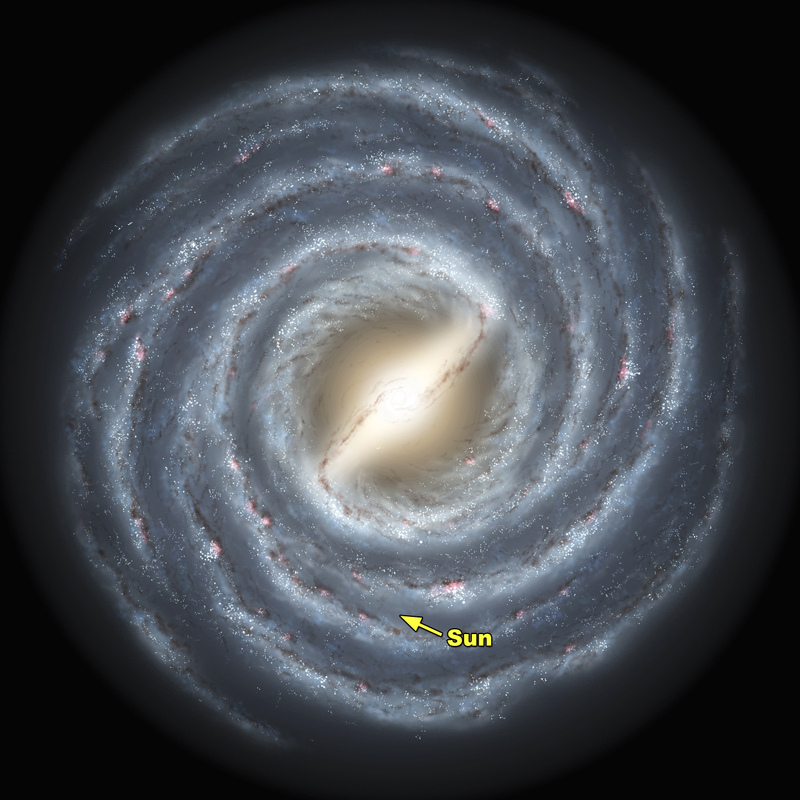[/caption]
The diameter of the luminous Milky Way is between 100,000 and 120,000 light years across, but that number could be much larger if you take into account dark matter. It all depends on where you measure the edge of the Milky Way to be…
If you are just measuring the normal matter we can see (in visible, infrared, X-ray and ultraviolet light), then the Milky Way is at least 100,000 light years across. The diameter is a bit larger (120,000 light years) if you take into account tidal streams – basically other galaxies the Milky Way is eating, such as the Sagittarius Dwarf Elliptical Galaxy.
But normal matter isn’t all that makes up the Milky Way. Simulations of our galaxy show that it has a “halo” of dark matter, which makes up about 10 times the mass of the visible matter in the Milky Way. Dark matter has never been directly observed, but is inferred due to its gravitational pull. This halo extends past the edge of the luminous part of the Milky Way, but the size of the halo has yet to be determined to a great degree of accuracy.
How do we measure the diameter of the Milky Way, given the fact that we live inside of it? We measure the distance to Cepheid variable stars. These are stars whose luminosity changes in a very predictable way because they puff up and shrink. Knowing the absolute luminosity of these stars allows us to measure their distance. Think of it this way: if you know how bright a flashlight is at 10 feet from you, and how that luminosity changes over distance, when it moves further away you can calculate that distance by determining how much dimmer the flashlight is.
Pamela talks about the diameter of the Milky Way, and how we measure it, in Episode 99 of Astronomy Cast. If you’re interested in learning more about variable stars – or even observing them – the American Association of Variable Star Observers is a great place to start.

